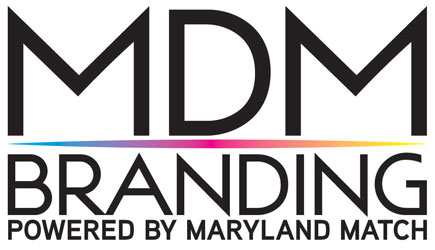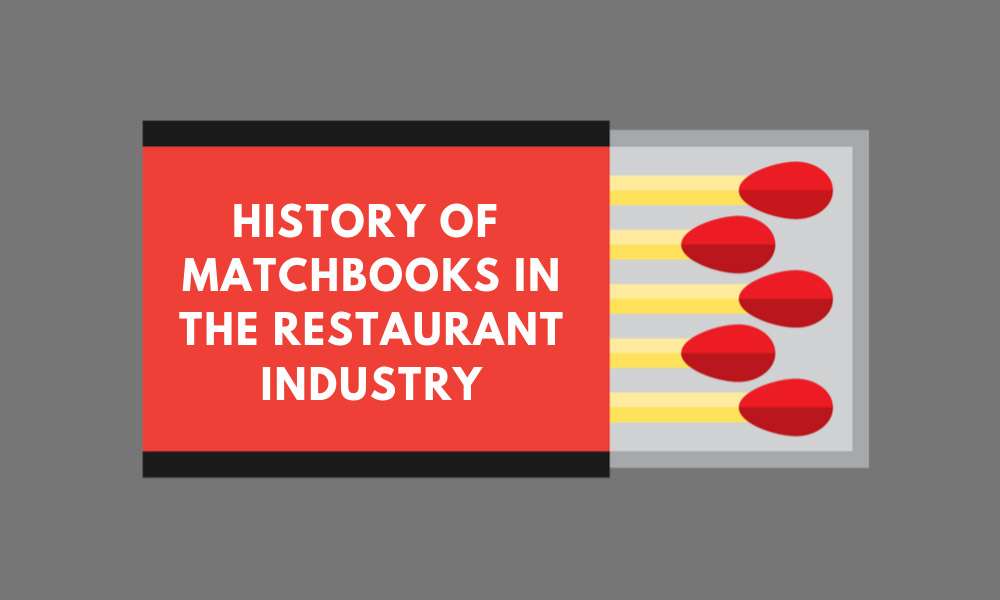Nowadays, a matchbook is something of a modern-day relic. Receiving one at a restaurant is enough to transport you back into the past, filling even the most stoic of patrons with waves of nostalgia. These aren’t just a thing of the past, though; custom-printed matchboxes are still a thriving part of the hospitality industry, with avid fans around the world. Although they’re still beloved today, to say they’ve gone through quite the transformation since their inception would be an understatement. Here’s a breakdown of the history of restaurant matchbooks.
Their origins
In 1827, English inventor John Walker created matches with the ability to light from friction. This paved the way for English attorney Joshua Pusey to come up with the idea of cardboard matches just a few decades later. It’s no surprise that an attorney devised them—for many years, attorney’s offices were where you’d most commonly find matchbooks. Their popularity grew, however, once people realized how handy they were for everyday life. The hospitality industry in particular found a large market for them, as many of their patrons wanted to smoke after their meals or while they enjoyed a drink.
Matchbooks’ original purpose
At first, matchbooks were simply a practical way of allowing people to light up their cigarettes. Back in the day, smoking was a very common endeavor. While less and less people smoke nowadays due to the known health issues smoking poses, people never thought twice before lighting up cigarettes in the past. This made matchbooks hot commodities. Since many people smoked after their meals or would want a puff while drinking at a bar, using matches was as natural as breathing. Today, though, you’re much less likely to see people using them while out and about. Instead, restauranteurs have discovered the immense marketing benefits of custom matchbooks.
Use as a marketing tool
Once the Mendelssohn Opera Company found success in advertising with matchbooks in 1897, people saw just how much potential they really had. In 1902, the Pabst Brewing Company was the first company in the bar and restaurant industry to take the plunge and use matchbooks as an advertising opportunity. They ordered a massive batch and found great success with it. From on the on, it was clear to companies that custom matchbooks were an ideal way to solidify their brands’ identities and get them into the hands of consumers—literally.
Why they’re great marketing tools
At first, matchbooks may seem like an odd way to advertise. In the past, posters or radio spots were the norm in advertising, so matchbooks—which are more of a practical tool—may have seemed like a wild idea back then. However, they still work to this day for many reasons. First, you can get a huge number of impressions out of such a small item. A matchbook typically comes with 20 matches, meaning people will pull it out at least 20 times during its lifespan. Typically, this will be when they’re entertaining or when they have other friends around, which increases the number of potential impressions. People are also likely to see the matchbook on their dresser, in their bag, or wherever they decide to keep it. With the help of a punchy custom logo, a matchbook will really stick out in people’s minds and help them remember your brand. No longer marketed as tools for smokers, matchbooks are rather an extremely cost-effective way to get your name out there.
Their appeal to consumers
At first, matchbooks were largely practical items for consumers. Many people smoked, so it was only natural they’d be enthused about a free way to light up their cigarettes. Less and less people are smoking cigarettes, but that doesn’t mean there aren’t any uses for matchbooks at all—the focus has simply shifted. Many people love having candles in their rooms, as they add to the ambiance and pleasant atmosphere. If you’re hosting a fancy dinner party, matchbooks can be a unique feature to bring out and show off to your guests. In general, though, you’ll find matchbooks of all shapes and sizes in the hands of avid collectors.
Collectors’ enthusiasm
Phillumeny, or the hobby of collecting matchboxes, is something in which thousands of people proudly partake all around the world. Derived from Greek and Latin words meaning “loving” and “light,” the term is a fitting moniker for these matchbook enthusiasts. Matchbooks are not only fun and practical tools, but also genuine pieces of art. From vintage finds that can transport you to an entirely different decade to modern matchbooks you can find at restaurants today—which boast some of the most cutting-edge art styles—each matchbook has its own unique merits. Perhaps that’s what draws so many collectors in—while the base form is the same, no two matchbooks are truly alike.
How they’re used now
Though their purpose may have shifted, there’s still a place for matchbooks in today’s world. Restaurants and bars have incredible uses for them—they’re not only fun keepsakes for your patrons, but also a low-cost way of taking your brand awareness to new heights. From avid collectors to people who simply pick them up for a bit of nostalgia, matchbooks are able to transport people back to the past in an artful, interesting way. Best of all, matchbooks themselves can hold up against the test of time, so they’ll be useful to your patrons for years to come. When it comes to promoting your brand, there are few better products out there.
From their very inception, matchbooks have caught the public’s eye in a big way. While their use has shifted, their appeal has been truly unwavering. Simply look up people’s collections, and you’ll immediately see just how important matchbooks are to those enthusiasts. At Maryland Match, we know firsthand just how transformative these products are for brands and for the patrons who keep them for years to come. If you want marketing that will stand the test of time, custom-printed matchbooks are the way to go.


